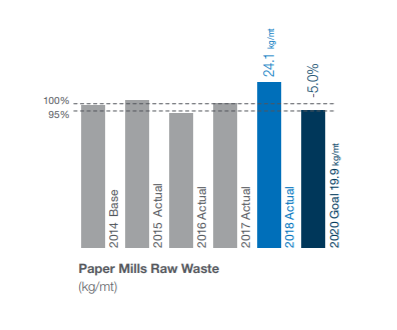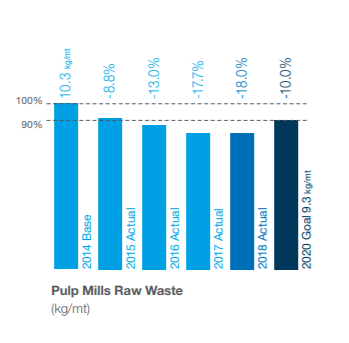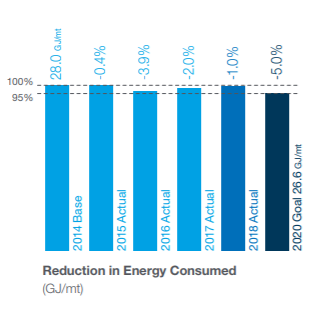Sappi's Commitment to Reducing Global Environmental Footprint
Company close to reaching goals set in 2020Vision
At Sappi North America (SNA), we keep sustainability at the forefront of our operations. Together with the 2020Vision— Sappi’s global growth strategy—we use our sustainability goals program to set targets, initiate improvement actions, and monitor our commitment to progress. Our goals are reflective of the desires of our employees, customers, and investors.
Lower total energy consumed
Energy use and climate change remain top of mind for Sappi, our customers, and our stakeholders. We’ve worked to control energy consumption, and continue to focus on this critical aspect of our operation. Our goal is to reduce the total amount of energy expended per ton of product by 5 percent, as compared to the 2014 baseline. In 2018 our total energy use increased, primarily driven by the rebuild of PM1 at Somerset. We are on track to achieve our 2020 target, assuming improved Reduction in Energy Consumed efficiencies and output of PM1.
Reduce raw material waste in our pulp and paper mills
Efficient use of raw materials improves front-end cost savings, reduces environmental impact and lowers costs associated with waste processing. To achieve these benefits, we have separate goals for the pulping and papermaking process areas. In our paper mills, we’ve established a 5 percent reduction goal, whereas our pulp mills are targeting a 10 percent reduction in material losses (which we measure in mill process sewers before these waste streams enter our on-site treatment plants). The efficiency projects over the past several years continue to pay dividends, particularly at our Cloquet pulp mill. Once again, reductions have been achieved. This year the mills have accomplished a total reduction of 18 percent over the 2014 baseline. Conversely, Paper Mill Raw Waste increased 15 percent from our 2014 baseline, which was driven primarily by our PM1 rebuild. We remain committed to achieving the 5 percent reduction by 2020.
Read more from Sappi North America's 2018 Sustainability Report here: tiny.cc/SappiNA_SR18




